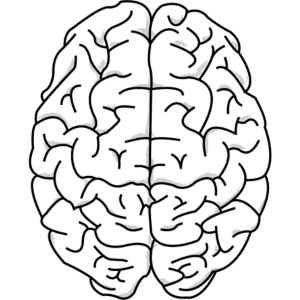ADHD: Supporting Not Managing Behaviour
Attention Deficit Hyperactivity Disorder, or ADHD, is a neurodevelopmental condition that can affect how people behave. As with other neurodivergence, such as autism, concerns have been raised about only looking at ADHD through a clinical lens, which can lead to a deficit-based approach.
While individuals with ADHD may need support, diverse ways of thinking should be celebrated. Neurodivergent people can experience barriers due to a lack of understanding about the natural differences in how we experience the world. Therefore, it’s important to carefully consider the aims of the support we put in place. One-size-fits-all approaches for supporting behaviour can have little impact as they often discriminate against at least one neurodivergence.
ADHD does not exist in a vacuum. Many individuals will have ADHD and another diagnoses, experience, or neurodivergence. These can include anxiety or depression, demand-avoidance (sometimes referred to as PDA), dyslexia, dyspraxia or dyscalculia, autism, Tourette’s Syndrome, and OCD (Obsessive Compulsive Disorder). If unsupported or unnoticed, this may affect their quality of life. This means that, when we consider support for ADHD, we need to consider that the spectrum of need can be comparatively broad.
Common behaviours associated with ADHD
Individuals with ADHD can show a number of different behaviours, ranging from inattentive to hyperactive and impulsive. Some individuals engage in one type of behaviour more than another, but there is also often overlap.
Given that there can be such diverse presentations of ADHD, individuals are sometimes not referred promptly for assessment or diagnosis, despite potentially needing additional help and support to successfully navigate day-to-day life.
We can also have an unconscious negative perception of ADHD, often caused by generalised assumptions of typical behaviours. It can be helpful to consciously reframe this. For example, what appears to be ‘inattentive’ behaviour to us, could also be seen as hyperfocus, but the individual may be unable to control what they pay attention to.
The question for us as professionals is: how can we best support the behaviour of individuals either with ADHD, or on a waiting list for assessment, to ensure the best outcomes for all?
Why we need to understand and recognise signs of ADHD
While there is substantial variation by country, given the prevalence of ADHD is thought to be around 5% of children, and slightly less for adults, one thing is certain: if we work in education or health and social care, we need to understand the various characteristics of ADHD, so that we can always offer the best support to individuals.
We also need to bear in mind that, even without a formal assessment, we can still provide support, regardless of diagnosis. After all, good support for neurodivergent people is good support for everyone.
And when it comes specifically to behaviour, an understanding, compassionate and curious approach is particularly important. Some individuals may feel misunderstood, judged or blamed for their actions, because they are experiencing barriers due to a lack of understanding of neuro-difference. Appropriate support can challenge this and enable individuals to succeed.
What does ADHD look like?
ADHD can look very different in different people, but broadly speaking, the associated behaviours fall into two distinct categories: inattention, and hyperactivity / impulsivity. For this very reason, the term, ‘ADHD’ can itself be somewhat confusing: contrary to what it seems to suggest, not everyone with ADHD shows hyperactive, fidgety or restless behaviours.
Only when we are aware of and recognise the widely diverse types of behaviours we may see, can we decide on the best, most appropriate supports:
Inattention
Inattention makes it difficult for individuals to focus or concentrate on a task, or they may hyperfocus, without being able to manage what they hyperfocus on.
Common indicators of inattention include:
- Being easily distracted, losing focus or concentration
- Finding it hard to listen to and follow instructions
- Being disorganised, forgetful, or losing things
- Making mistakes
- Struggling with time management
- Regularly changing task or activity, or leaving them incomplete
- Daydreaming or ‘zoning out’
It is sometimes easy to overlook inattentive behaviours, as they may be harder to spot, and are not always considered ‘typical’ of ADHD. In classroom environments in particular, these may be less noticeable because the behaviours may have less impact on other students, when compared with hyperactive or impulsive behaviours.
Hyperactivity / impulsivity
These behaviours can be easier to recognise, and may prompt us to offer support more readily, as they can often impact not only on the individual, but also those around them. This may particularly be the case if behaviours raise the level and/ or likelihood of risk in our setting:
- Constantly moving and/ or fidgeting
- Interrupting others
- Difficulties with turn-taking
- Acting impulsively without considering the consequences
- Lacking a sense of danger, and risk-taking
The behaviours associated with ADHD can adversely affect individuals’ lives, and detrimentally impact outcomes, academically, socially and mentally. With so much at stake, then, how can we support behaviour for people with ADHD?
Supporting, not managing behaviour
Our aim should not be to ‘fix’ or manage behaviour. Instead, we need to acknowledge a person’s unique set of characteristics and find effective ways to help them reach their full potential.
1: Develop a puzzle-solving mentality
Given the complexity of ADHD, we need to become adept at looking beyond the immediate behaviours we see. We can look for patterns, consider individuals’ prior experiences, and identify external factors. We can ask ourselves questions, such as:
- What do we know about this individual?
- When do we see these behaviours?
- What prior experiences do they have?
- What could they be communicating?
By getting curious and joining the dots together, we can form a bigger, clearer picture of an individual. This then allows us to take a holistic approach when deciding on the best supports. For example, we might implement regular movement breaks, or consider alternative seating, to support a need for movement. Or we might put supports in around personal organisation if someone needs help to keep track of their belongings.
2: Adopt a strengths-based approach
The word ‘deficit’ in the term ADHD can sometimes, inadvertently, lead us to adopt a deficit-based approach to support. In other words, we overly focus on what an individual with ADHD cannot do. And we do this from our own perspective of what ‘should’ be happening, rather than through the lens of the individual.
By reframing our approach to a strengths-based one, we shift the focus onto what a person can do. We can adapt the way we offer support, putting the individual front and centre, finding out what their goals and aspirations are on a personal level, and involving them in decision-making.
We need to remember that the strengths we perceive individuals to have may not be the ones they recognise in themselves, so a collaborative approach is vital. Through open, two-way discussions, we can encourage individuals to identify ways to capitalise on their strengths.
3: Engage with families, parents and carers
Engaging with families can be a useful way to share and develop effective strategies to support behaviour. Parents and carers are the experts on their child, and we can use this information to help us work together collaboratively.
Parents, carers and other people within an individual’s network may also need support to understand the behaviours they are seeing, especially if their loved one does not yet have a formal diagnosis. Often for families of children in particular, parents and carers may carry deep-rooted feelings of shame, blame or stigma and feel as though they are unable to offer the right support, or that their parenting approach is being scrutinised.
Through establishing open communication channels, both within and beyond our setting, we can share knowledge, expertise and perspectives to develop a joined-up, consistent approach to behaviour support.
4: Be needs-led, not diagnosis-led
By shifting our focus away from the diagnosis, or ADHD ‘label’, and instead adopting a needs-led approach, we can ensure that we always respond to what the need is. We can take all contextual factors into account to devise an appropriate plan of action.
By establishing strong relationships with people on an individual level, we can build a picture of their unique needs, and incorporate these into support plans and individual risk assessments. These can then be shared with anyone involved in their care or support network.
Creating a culture of acceptance and validation
Having ADHD is not about lacking or being deficient; on the contrary, people with ADHD often have unique skills and attributes that, when channelled appropriately and supported by professionals, can set them up for success in life.
Celebrating neurodiverse ways of thinking and being, encourages us to question what the supports we put in place are trying to achieve, and if they are truly for the individual’s benefit, or sometimes inadvertently, to try and make someone conform to how we want them to behave.
When we support the behaviours we see, within a wider climate of understanding and inclusion, we can help children, young people and adults with ADHD to unlock their full potential, and lead rich, fulfilling lives.





